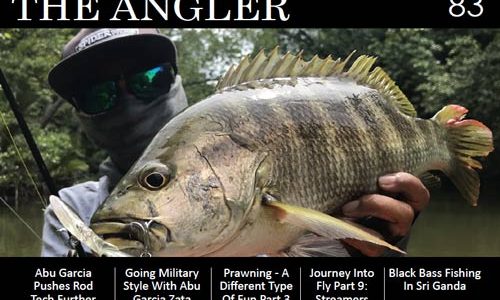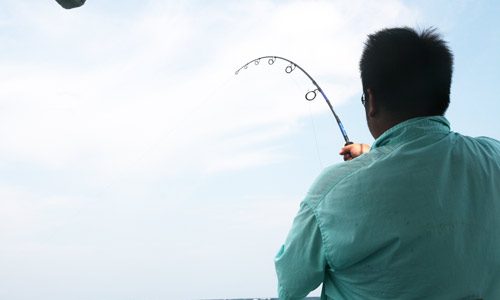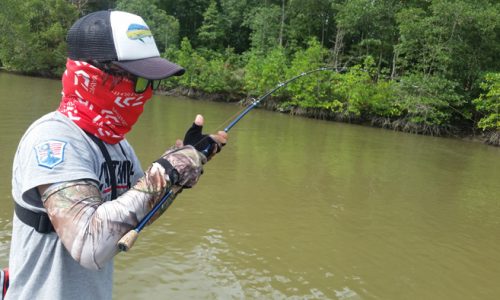Prawn Fishing Part 3: Prawning At Rivers
By Phil Foo
Prawn fishing is another fishing related sport that anglers can partake in. Prawns provide a different kind of fun and thrill for anglers; an alternative to the usual thoroughfare. In the last issue we discussed prawn fishing in payponds or pools that were built to allow anglers to fish for prawns for a certain amount of cash. In this issue we look at fishing for prawns in the wild.
Have you heard of the phrase, “where there are prawns (blue pincer prawns), there are crocodiles?” This is something that I have heard quite often. What does this phrase mean? It means that there are prawns to be fished at places where crocodiles live. A win for both Crocodile Dundee and prawn anglers.
Where Does One Find Crocodiles?
Our rivers here in Malaysia are home to crocodiles. There are a few species of crocodiles that call our rivers home. Blue pincer prawns too call our rivers home. They share similar habitats with some of these crocodiles. Rivers such as the one in Kuala Selangor, and in Rompin are home to blue pincer prawns. You can fish them from land but I recommend fishing them from a boat.

One of the rivers that I have fished in for river prawns (blue pincer prawns).
What Will You Need?
Prawning in the rivers and doing so in payponds will require different fishing tackle. The difference is that in a paypond, you pretty much fish where you sit. You can walk about the pool and drop your bait into the pool. When it comes to fishing for prawns in a river, the situation is different. You can fish from the banks but only at certain sections. Most banks at our rivers are hard to get to on foot. A boat will certainly help but you will have to do more to cover more ground and to catch more prawns.
Fishing Rod
You can use a pole for fishing prawns in a river but a fishing rod provides you with more options. This simply means that you can fish further than those who fish with a pole. An ultra light spinning rod with a soft tip will suffice. A soft tip is recommended because unlike, prawns can be small and big (about 500g). Small ones eats with finesse (quietly, stealthily, an slowly) and they do not grab and run. The bigger ones do run and make their presence known. It is important to observe the tip of your rod.
Spinning Reel
Getting your bait out is important. A spinning reel will certainly help. You don’t need reels with high drag power, strong cranking power, high gear ratio, etc. A small spinning reel will do. But the reel must be smooth especially during the retrieve where you will have to employ a smooth consistent pressure when bring the prawn up. A reel that jerks or has a sticky feel when retrieving is a reel that will help you lose prawns instead of catch them by jerking the hook off the prawn and even tearing off certain sections of the prawn that the hook is latched to.
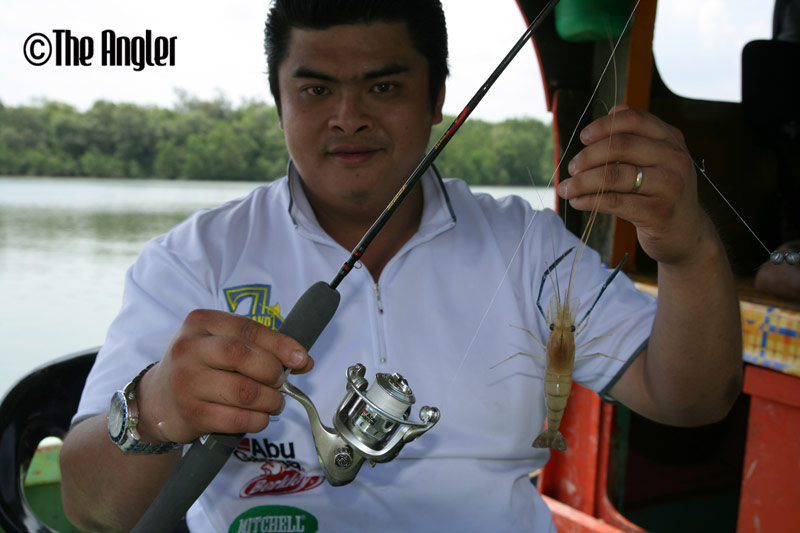
Ultralight rod, small reel, light lines, sinker, and sharp hook. A small blue pincer prawn took a liking to my bait (small prawns).
Main Lines
Any line 10lb to 15lb, will do. I prefer to use super-lines that are fluorocarbon coated such as Spiderwire Ultracast Fluoro-Braid, as compared to monofilament lines. This is because super-lines are pound for pound thinner in diameter compared to monofilament lines. The disadvantage is that they float and they have a high amount of drag in water. Hence why I prefer those that are Fluorocarbon coated. Fluorocarbon coated super-lines sink faster and they have less drag in the water.
Note that one will be fishing for prawns in river and rivers have currents. A low drag, small diameter line will certainly be advantageous. This means that the prawn will feel less resistance when taking the bait. Also, super-lines do not stretch and that is great. Sensitivity is certainly higher. Pressure is a lot more consistent.
Of course one can use monofilament lines too as super-lines do cost more. Monofilament lines do work but they will be larger in diameter unless one opts for lower poundage. The other thing is stretch. Monofilament lines do stretch (some more than others). A softer tip rod plus a stretchy line also is definitely a disadvantage. Maintaining pressure is harder, and setting hooks become harder too.
Leaders
As for leaders I prefer fluorocarbon lines as they are stiffer, the stretch is very low, they have less drag, and they sink faster. Fluorocarbon lines are also harder to see underwater thanks to their density. They cost more as compared to normal monofilament lines though. Normal monofilament lines can of course be used as leader lines too, just that they do not have the advantage of being almost stretch free, they do not sink as fast, and if the water is clear; can be seen by prawns. The other option are Fluorocarbon coated monofilaments. They still have stretch but they sink faster and have less drag. 6lb to10lb leaders will be good enough.
Hooks
Needless to say, hooks are a must. Not just any hook but hooks that are sharp (this goes without saying). Do check (if allowed) for sharpness by running them on your fingernail. If they easily latch on to your fingernail, they are sharp enough. I have bought hooks that were not sharp enough and ended up losing a good number of prawns. Setting the hook takes some control too. To hard and it tears off. To soft and it does not catch. A sharp hook allows for easier penetration. As for sizes; hook sizes 2 to 6 are what you’ll need.
Sinkers
When fishing for prawns at rivers, you will need to use a sinker that allows line to move through it, in short; running sinkers. A sinker is needed to get your bait to the bottom. Remember that rivers have currents. Although the best time for fishing prawns is when the currents are slow, but slow current is still current. A sinker will bring your bait to the bottom as well as hold your position. Size of sinker will depend on your line as well as the current. Size 3 to 6 will suffice.
There you go; river prawn (blue pincer prawn) fishing and what are the tackle needed. There are more to learn should be interested in fishing for prawns in rivers (instead of at man-made pools or ponds). We will discuss further in future issues. Stay tuned and happy fishing.
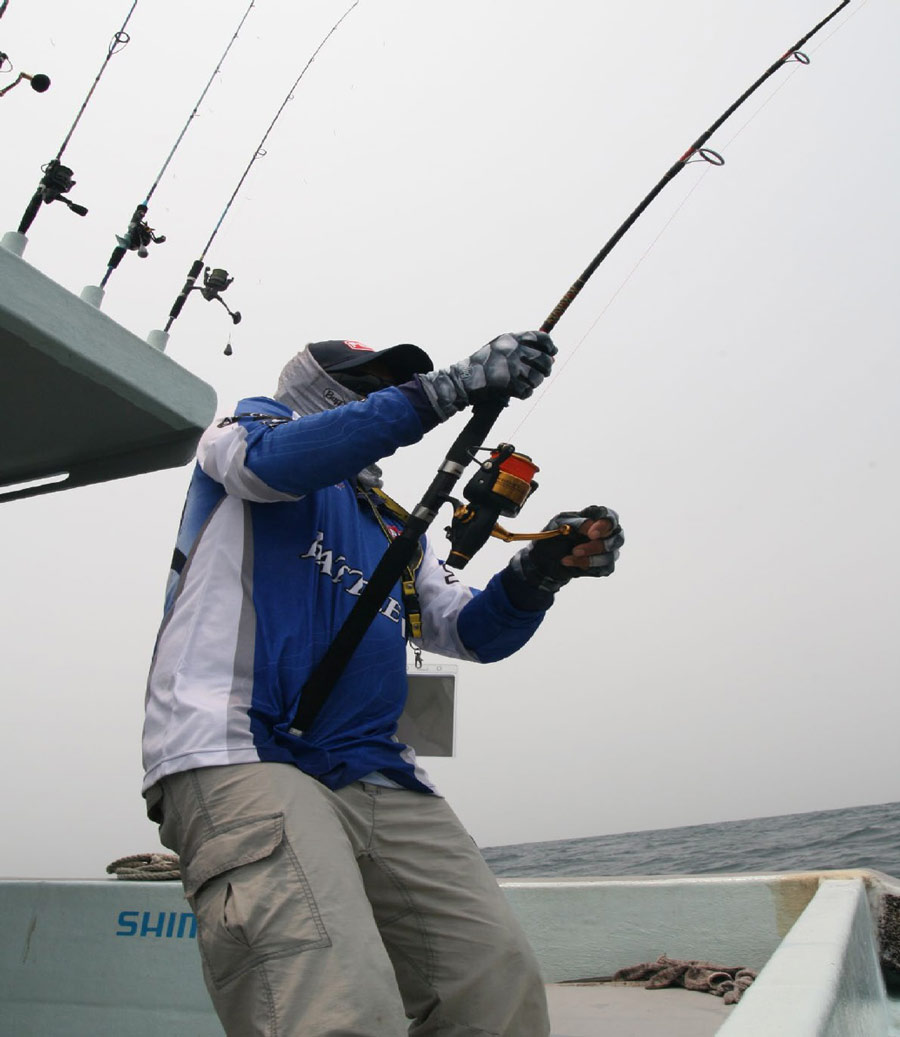
Contact us
For more information or should your have enquiries, do drop us an email.




